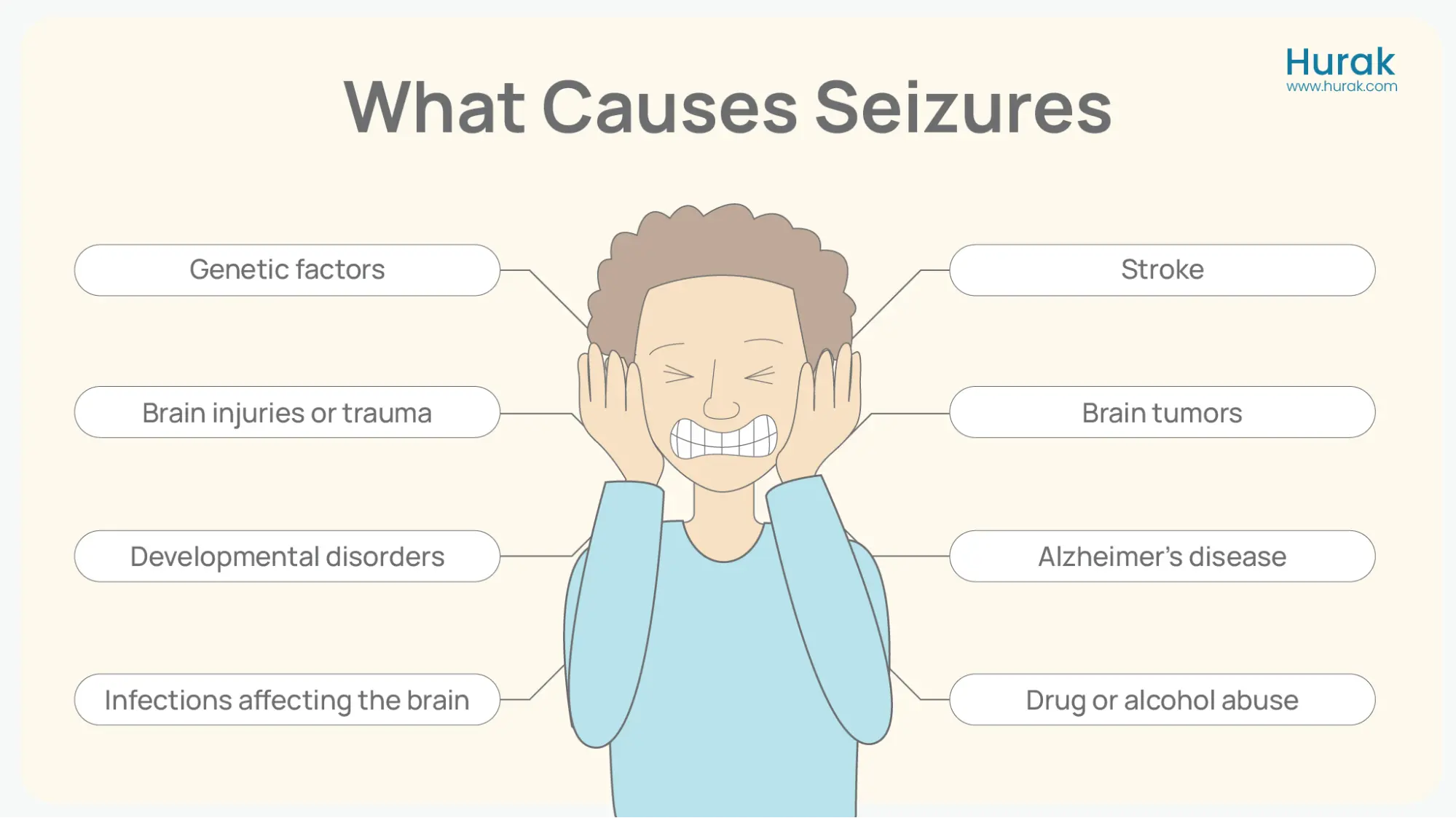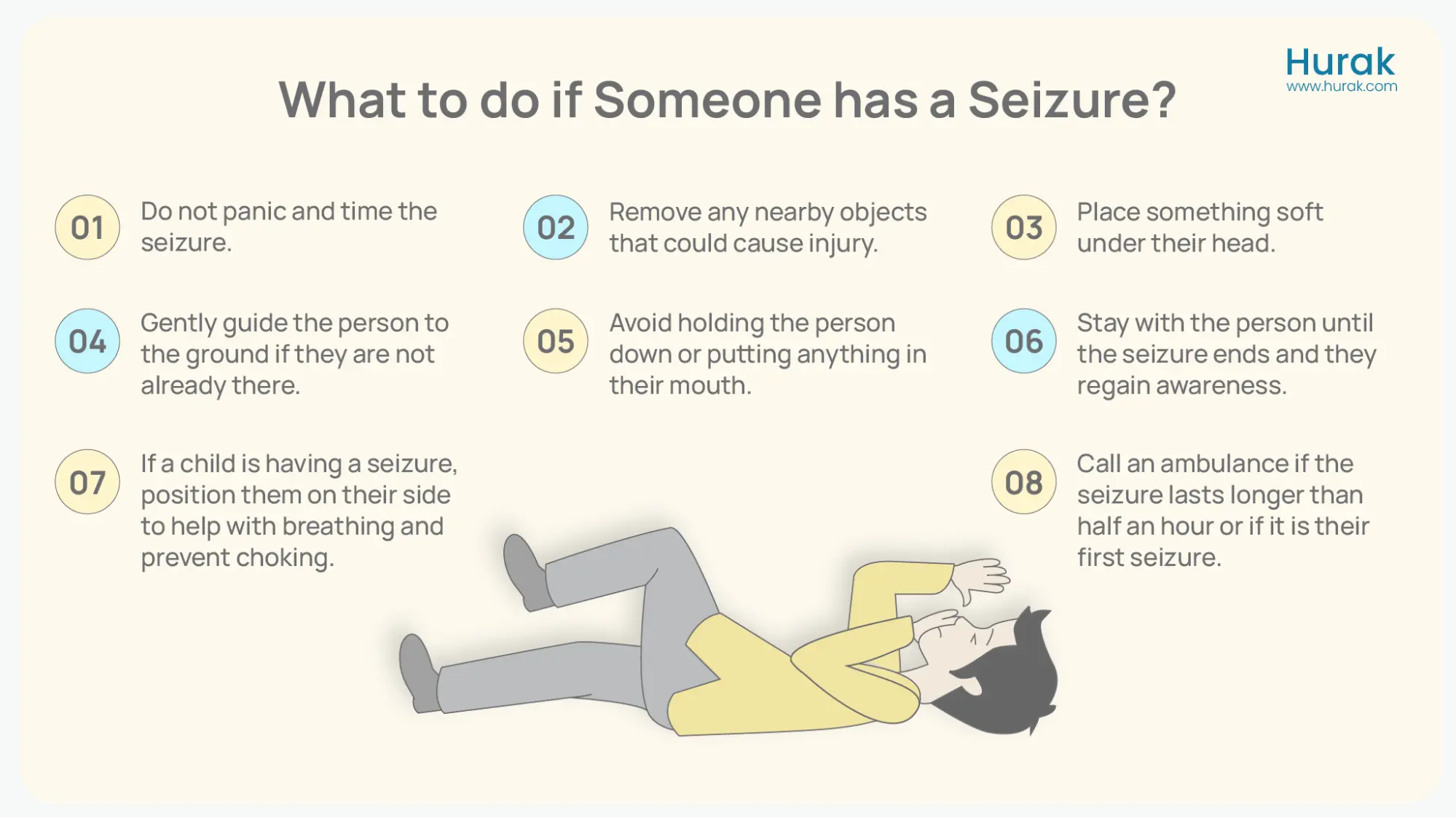What is Epilepsy?
Epilepsy is a disease that is widespread and numerous people across the whole world suffer from it. It is a brain disorder that causes recurring seizures. Anyone, irrespective of their age, sex or race can develop epilepsy.
What is a Seizure?
A seizure is when damaged brain cells send an excessive surge of electrical activity in the brain. It is important to note that Epilepsy is often referred to a ‘Seizure Disorder’
This disorder can manifest at any age although it is common for children or elderly people in their sixties to have seizures. To be diagnosed with epilepsy, usually a person has to have more than one seizure that is unprovoked or the probability of getting a seizure is high.
Types of Seizures
Seizures are generally classified into two main categories:
Focal (Partial) Seizures:
- Simple focal seizures: Influence the smallest section of the brain without inducing a loss of consciousness.
- Complex focal seizures: May result in changes to the level of consciousness.
Generalized Seizures:
- Absence seizures: Short lapses that are often confused with daydreaming.
- Tonic-clonic seizures: Include a loss of consciousness, muscle stiffening, and jerking movements.
- Atonic seizures: Lead to a loss of skeletal muscle tone, making people prone to falling.
- Myoclonic seizures: Characterised by sudden, brief, involuntary movements, also known as muscle spasms.
What Causes Seizures?
Seizures can have various causes, including:
- Genetic factors
- Brain injuries or trauma
- Developmental disorders
- Infections affecting the brain
- Stroke
- Brain tumors
- Alzheimer’s disease
- Abnormal levels of substances like sodium or blood sugar
- Drug or alcohol abuse

What Causes Seizures in Adults with No History?
Epilepsy is an illness where fits can begin in adults as well as children though the adults have no past records of seizures. Possible causes include:
- Undiagnosed brain tumors
- Stroke
- Head injuries
- Other conditions such as; meningitis or encephalitis
- Autoimmune disorders
- Severe alcohol withdrawal
- Use of or contact with medicinal. Interaction with drugs or other medication.
Therefore, often it is scary for the first time, especially when it happens to an adult, it is better to be examined by a doctor.
What to Do If Someone Has a Seizure
If you witness someone having a seizure:
- Do not panic and time the seizure.
- Remove any nearby objects that could cause injury.
- Place something soft under their head.
- Gently guide the person to the ground if they are not already there.
- Avoid holding the person down or putting anything in their mouth.
- Stay with the person until the seizure ends and they regain awareness.
- If a child is having a seizure, position them on their side to help with breathing and prevent choking.
- Call an ambulance if the seizure lasts longer than half an hour or if it is their first seizure.
Learn more about the responsibilities of a First aider.

What Diseases Cause Seizures?
Several diseases and conditions can lead to seizures, including:
- Epilepsy
- Brain infections (like meningitis and encephalitis)
- Brain tumors
- Stroke
- Alzheimer’s disease
- Multiple sclerosis
- Lupus
- Cerebral palsy
- Phenylketonuria (PKU)
What is Absence Epilepsy?
Petit mal epilepsy also known as absence epilepsy is a type of epilepsy which results in small epilepsy that subsides quickly and leads to a temporary loss of consciousness. These seizures are short in duration and a person can suffer from them multiple times in the day.
These sort of seizures last for a few seconds. Most of the cases start in childhood, or adolescence and the early manifestations are sometimes regarded as mere daydreaming or attention deficit disorders.`
Can Epilepsy Be Cured?
Epilepsy can only be treated to a certain extent; however, if diagnosed early and well taken care of, most people suffering from the disease can live normal lives. Treatment options include:
- Anti-Epileptic Drugs (AEDs): It is usually the first-line treatment of choice for most of the epilepsy patients out there.
- Surgery: It is fairly likely that there may be ways to have the part of the brain taken out via surgical procedure.
- Brain Implant Options: Vagus nerve stimulation (VNS) uses electrical signals that are sent to help regulate the occurrence of seizures.
- Ketogenic Diet: May help in controlling seizures in some people especially children.
- Responsive Neurostimulation: This is a chip which is placed in the head. It can identify instances of seizure and even act efficiently to put a halt to it.
Working with a healthcare team may result in developing a treatment plan that will be suitable for each patient.
Living with Epilepsy
It is also worth emphasising that most people experiencing epilepsy can work or study, go out with friends or travel, proving that epilepsy does not necessarily negatively affect a person’s quality of life. Here are some tips for handling epilepsy:
- It is imperative to have information on what causes certain types of seizures to occur.
- Exercise according to the fitness regimen which your doctor has prescribed for you.
- Diminish stress by practising different methods of relaxation.
If the doctor has given you a prescription make sure you take those medicines timely
- Inform people that are around regarding some of the things that they should do in case of a seizure.
Getting in touch with other people who may be going through tougher situations may also help.

Understanding epilepsy is crucial for supporting those affected and fostering a more inclusive community. Dive into our article to learn about its causes, symptoms, and how you can help. Join our First Aid at Work Training Course, get certified now! Together, we can make a difference!
Conclusion
If treated well, many patients with epilepsy are capable of leading productive lives. For any signs of seizures or epilepsy, it is advisable to consult your doctor or any other qualified healthcare provider.




